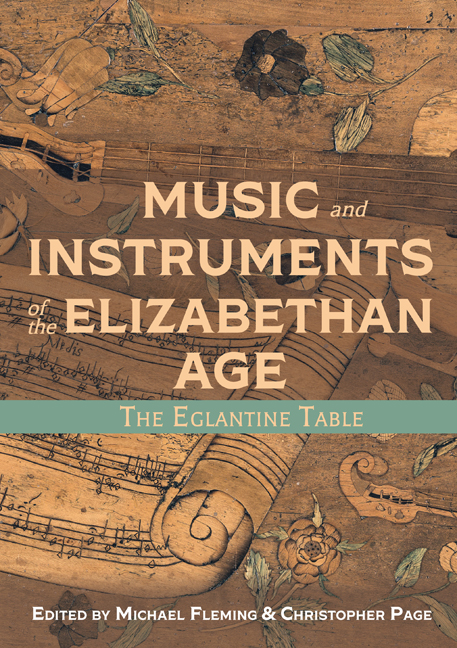Book contents
- Frontmatter
- Dedication
- Contents
- List of Illustrations
- Foreword
- Acknowledgements
- Note to the Reader
- List of Abbreviations
- Introducing the Eglantine Table
- Part I Silent Things
- Part II Music and Instruments
- Part III Broader Views of the Eglantine Table
- Appendices
- Glossary
- Bibliography
- List of Contributors
- Index
- Plate section
14 - The Table and the Music of the 1560s
Published online by Cambridge University Press: 24 March 2021
- Frontmatter
- Dedication
- Contents
- List of Illustrations
- Foreword
- Acknowledgements
- Note to the Reader
- List of Abbreviations
- Introducing the Eglantine Table
- Part I Silent Things
- Part II Music and Instruments
- Part III Broader Views of the Eglantine Table
- Appendices
- Glossary
- Bibliography
- List of Contributors
- Index
- Plate section
Summary
The musical objects depicted on the Eglantine Table – the instruments and the notated books and scrolls – might be likened to the contents of a Tudor chest which, having been filled and sealed in the late 1560s, has now been rediscovered, reopened and emptied out for inspection. Up to this point the chapters of this book have largely focused on single objects drawn from that time capsule; now, in Part III, the angle of vision widens in order to consider how these same objects fitted into the broader musical culture of early Elizabethan England.
A searching eye will notice that the Eglantine Table's contents sample an impressively wide range of Tudor musical experience. Some of the instruments belong to the outdoors, while others were used largely in interior spaces. The horn, the bagpipe and the shawms, for example, were loud and perhaps even raucous instruments, typically played in noisy places such as streets, taverns and sometimes aristocratic halls; but placed beside them on the Eglantine Table are quieter, more delicate instruments, such as the lute, harp, violin and gittern, which needed to be sheltered from rain and sun, and were best played in quiet indoor spaces, even privately in the chamber. The Table's musical objects also straddle social classes, and invoke both oral and literate music-making. For instance, lutes might be played by educated men and women of high rank, using notated music books that served for learning or collecting repertory; but a player of the bagpipe, such as the man discussed by Christopher Marsh in Chapter 15, was typically of low social rank, and it would have been hard, perhaps impossible, to find a piper who could read musical notation, let alone one who needed to do so. The Table also juxtaposes the sacred with the profane, specifically by way of the notated objects discussed in Chapter 5. One of its opened books contain wordless rounds and canons which, when their words are restored, prove to be drinking songs of a kind commonly sung socially (and from memory) in alehouses and on the streets; but the large scroll displays a godly four-voice song, used in private devotion and in church by people who were both educated and literate.
- Type
- Chapter
- Information
- Music and Instruments of the Elizabethan AgeThe Eglantine Table, pp. 191 - 204Publisher: Boydell & BrewerPrint publication year: 2021

